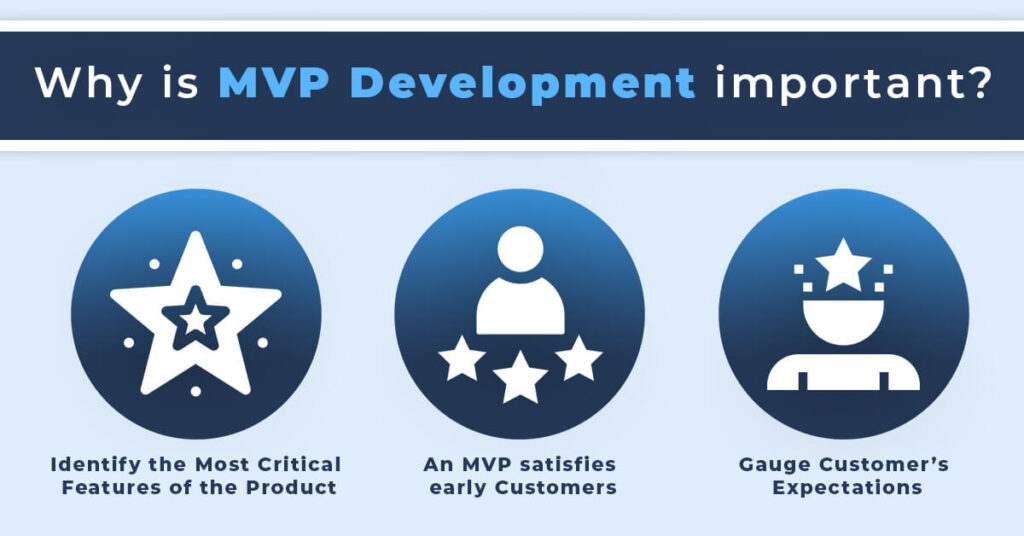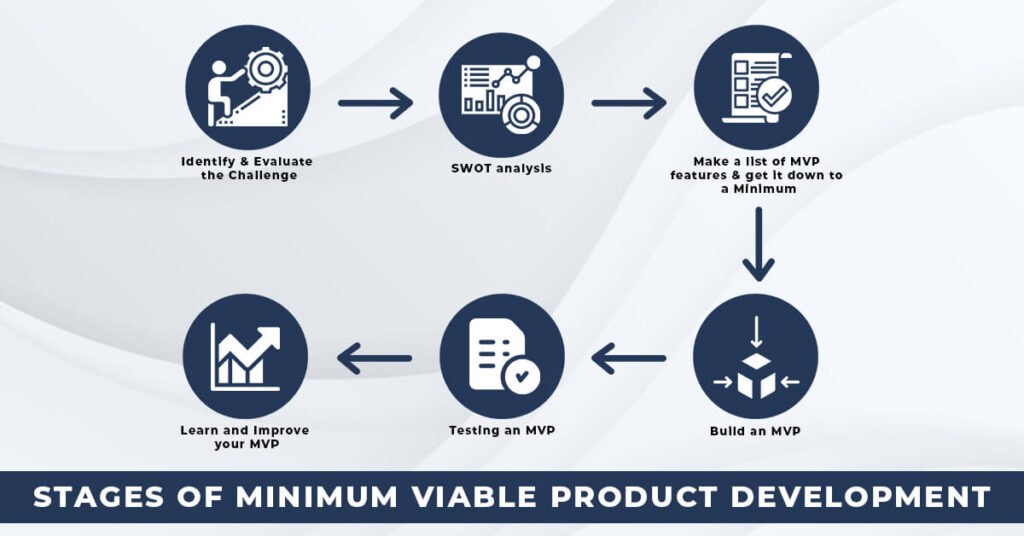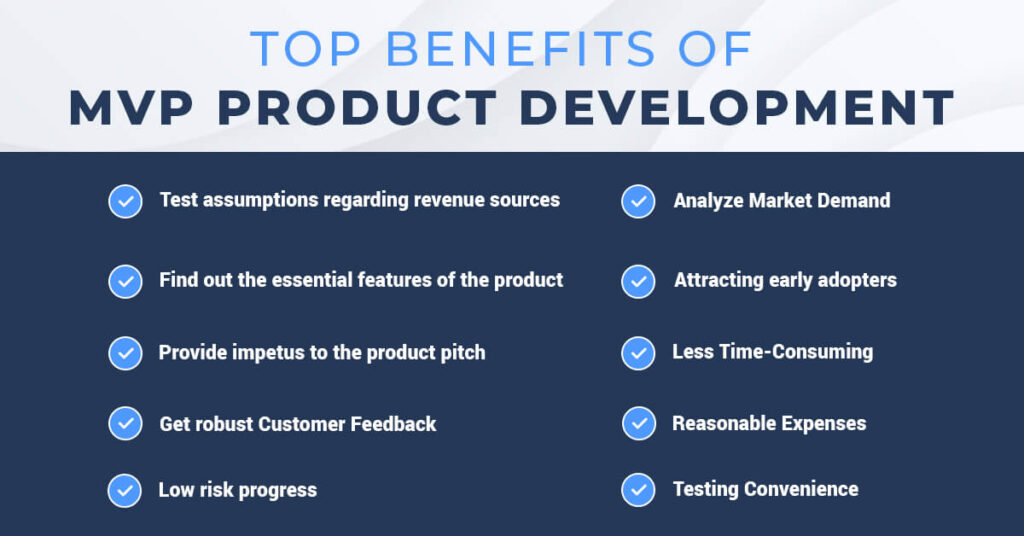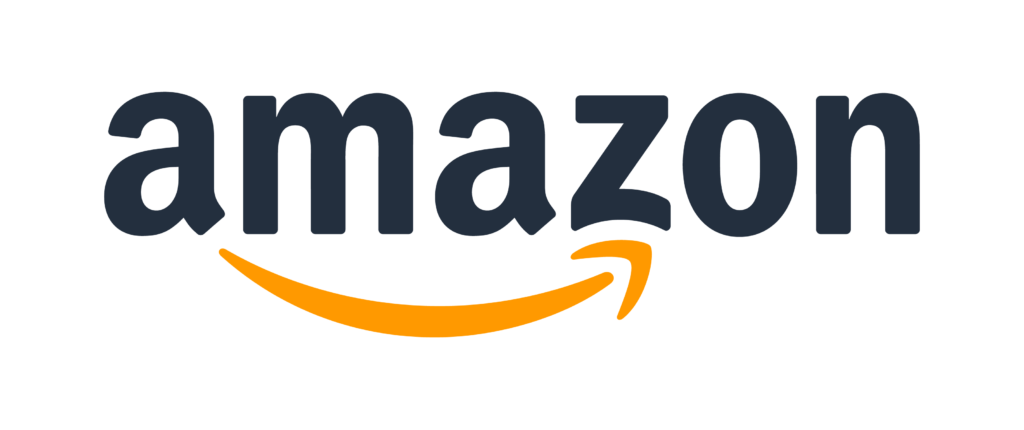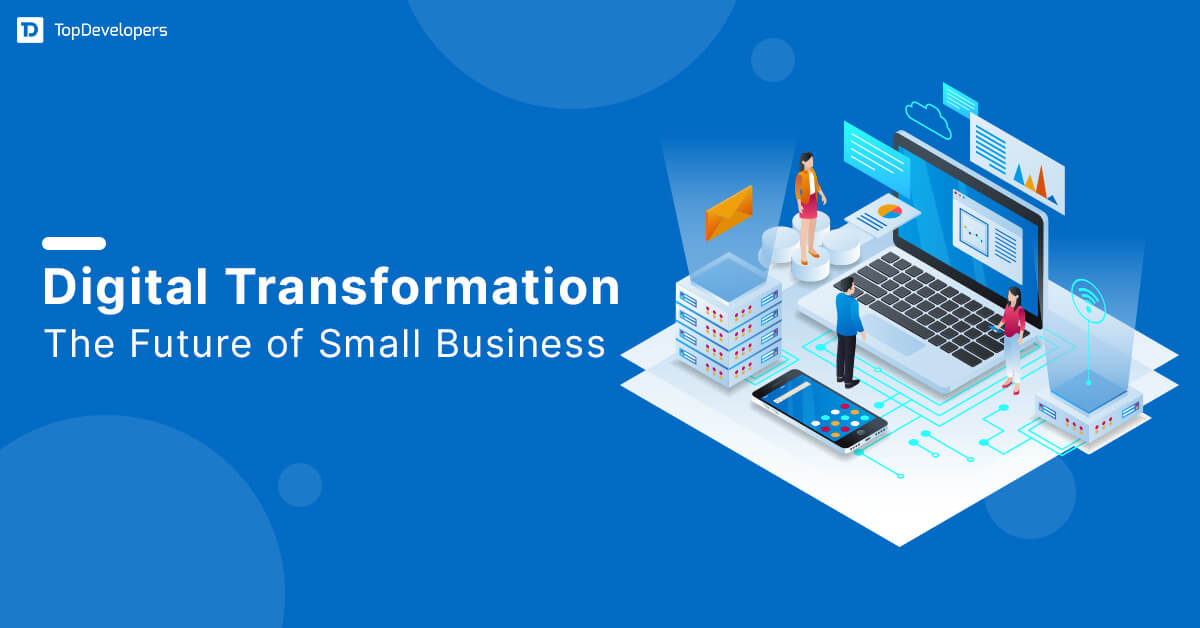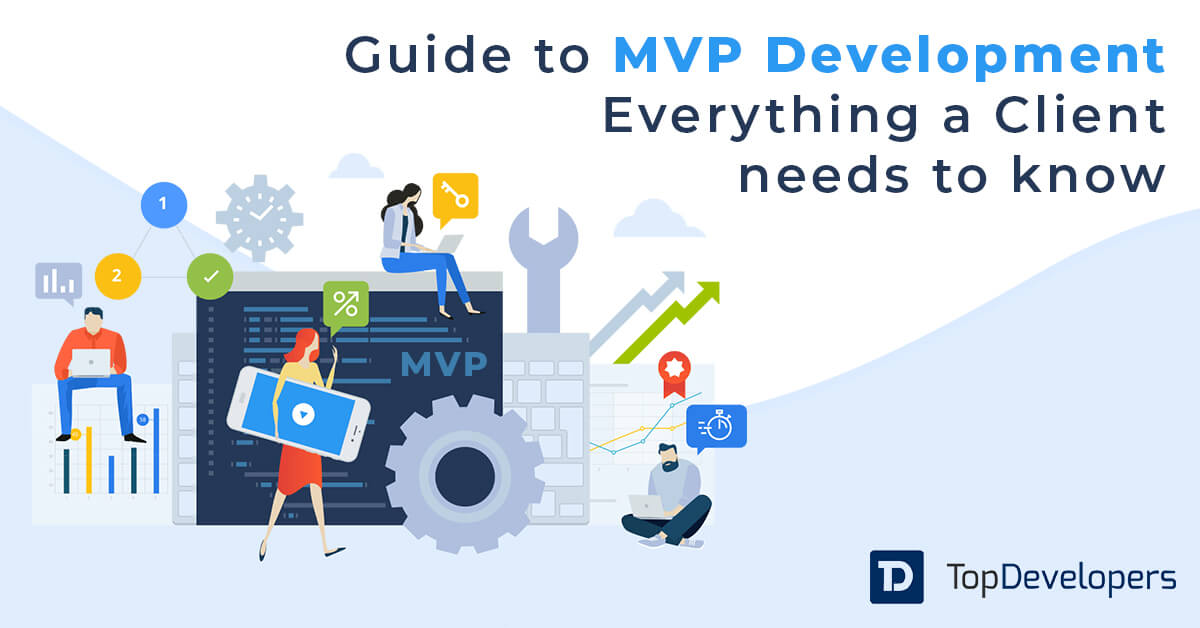
An MVP (Minimum Viable Product) is one of the most critical aspects of the mobile app development strategy, especially when outsourcing app development services as a startup. It is not restricted to the genre of mobile app development, though, and one can use MVP to build a PWA, website, or software.
A lot of time, effort, and money go into a digital product development process, and if the users do not like the product, then it all goes to waste. MVP is a solution that helps the development teams include the necessary features into your software product and eliminate the non-necessary ones which ultimately saves time and cost to develop an application.
Table of Contents
- What is a Minimum Viable Product?
- What is the Purpose of an MVP development for business?
- What are the Features of an MVP?
- What is the difference between a Prototype and an MVP?
- Which Mistakes you should Avoid during MVP development?
- What are the Stages of Minimum Viable Product Development?
- How to Build an MVP that targets the right market? 3 tips to help you
- What are the Pros and Cons of the Minimum Viable Product Development?
- How much does MVP development cost?
- How to measure the success of MVP?
- Why do startups fail despite MVP development?
- How to turn MVP into a Full-fledged solution? 4 tips will help you
- Popular Examples of Minimum Viable Products (MVP)
What is a Minimum Viable Product?
So what exactly do we mean by an MVP? Well, the acronym stands for a Minimum Viable Product. In Website, Software, and Mobile app development, the concept of MVP is prevalent. This is because people do not want an unsatisfactory product after putting in months of hard work and burning thousands of dollars.
An MVP helps businesses to have a great finished product by allowing them to validate their business idea cost-effectively.MVP is a bare-bones design that includes only and ‘only’ the essential components of the software or an app without which it cannot function. The idea is to get internal and user feedback before releasing the full-fledged product into the market.
While developing an MVP, the most critical thing to ensure is the viability of the product. The product shall not be compromised in a manner that imperfect results are delivered in the first stage itself. The ‘Minimum’ in MVP must be defined in such a way that it does not affect the core functionality of the product.
What is the Purpose of an MVP development for business?
The MVP is built to validate the idea of business quickly on a shoestring budget. MVP development enables businesses to gather the users’ feedback for the product idea and know if the target users find it wrong or if there’s something wrong with the application idea. With a trivial money and time investment, businesses can easily find the set of features that are welcomed by the target audience effectively. It serves a lot of purposes such as-
- Save businesses from ending up building something that their target users don’t require at all.
- Identify the diverse MVP usage and the ideas that can increase the product strength while addressing the shortcomings.
- The initial success of the MVP motivates the team to build a refined product that is warmly accepted by the target users.
- The users’ interest and engagement level in the MVP highlights the future prospects of the product.
What are the Features of an MVP?
A minimum viable product is a product that possesses astounding features that can allure early-adopter users and validate the idea of a product in advance to make the product development cycle better and foolproof. It is essential because it saves time and effort on the part of developers which ultimately saves the budget of business owners.
It is important that you as a startup or entrepreneur describe your project efficiently which will help all the stakeholders of the project to focus on the most important features. The MVP allows the hired dedicated developers to make the necessary changes according to the feedback received. Especially in sectors such as software, the MVP enables the production teams to get user feedback as early as possible for iterating and improving it.
Identify the Most Critical Features of the Product
Every product idea starts with a massive list of features that a business wants to include. But it won’t be wise to release all the elements in the first version of the product itself. You need to create a Mobile App Business Plan and transform it into a valuable strategy in order to release these features.
This would help you keep the costs in check and give you and your app development team sufficient time to see the effect of the features on the users. It is often understood that the function does not have the intended impact on the users and instead backfires. This can have a catastrophic effect on the popularity of the app.
The developers can select the priority features using an MVP and then test the effect of these features on the user and accordingly add or subtract the features in subsequent versions of the app/software. The feature selection criteria should be based on the function’s value for the users and its feasibility.
An MVP satisfies early Customers
Customer satisfaction is the prime motto of developing any product. To achieve this, As an entrepreneur, you need to decide the optimum features that will provide value to the user.
The MVP will help you in eliminating those features which are not satisfactorily engaging the users. This will allow the product to achieve early success, as its first version would be filled with appealing features.
By allowing you to gauge customer feedback, an MVP can help in making your product good enough to solve the problem of the user in the first instance itself.
Gauge Customer’s Expectations
For the product to succeed, the management must understand the needs of the users in an effective manner. Capturing the level of user engagement and measuring how users interact with the product has become the need of the hour today.
By experimenting with the features of the app, website, or software, the experienced development team members can gain valuable feedback, which will prove to be a critical success factor for the future.
What is the difference between a Prototype and an MVP?
Many times it is seen that a Prototype and an MVP (Minimum Viable Product) are considered to be the same. Let us bust this myth.
A Prototype is a visualization of the product, which aids the designers and developers in knowing the features that are to be integrated into the product for further development.
The peculiar thing about a prototype is that it can be used by developer teams planning to launch an MVP as well as by those teams who decide to release a finished product.
MVP is a product that is to be released to the users. The prototype is designed for internal use or for presenting a graphical image of the product to investors.
Which Mistakes you should Avoid during MVP development?
In reality, mistakes are no exception. But if the development errors are avoided, the startups can cook a recipe for success. Here are the mistakes that you should not make while building an MVP for your business product.
- Don’t invest efforts into wrong problem resolution.
Identify the target audience first and then outline the problem that the product will solve efficiently. - Don’t ignore the prototype development phase.
Create a rough sketch of the MVP to visualize the product flow and user journey so that MVP determines how the product will function. - Don’t target the wrong user segment for gaining feedback.
Consider the relevant feedback from the targeted users not from friends or relatives because your product feedback from the intended users will benefit your product development. - Don’t use any development methodology for MVP development.
There are many popular methodologies that can help you in MVP development such as the Agile methodology, which is considered the best methodology for MVP development incrementally. - Don’t give more importance to one of these two- quantitative or qualitative feedback.
Striking a balance between both types of feedback is vital to assessing MVP performance, user-friendliness, and usability.
What are the Stages of Minimum Viable Product Development?
By now, you will agree that an MVP plays a vital role in the development process of any IT product. But, before you start the process of building an MVP, you must know some necessary details about the stages involved. To make an MVP, the developers must follow the correct procedure. There are various stages involved in MVP development, and by knowing about these stages, the developers can build a functional MVP much faster.
Identify and Evaluate the Challenge
The first stage is evaluating the challenge.
Before you start MVP development, you must answer the following questions.
- Who are your targeted users?
- What are the problems that they face?
- How will your product solve their problems?
- Who are your competitors?
- Are they able to solve the problem of the users in an effective manner?
By conducting a thorough analysis of the problem, the developers will know about the pain points of the audience. They will be able to define the target audience better by conducting surveys, interviews, and analyzing data.
SWOT Analysis
SWOT stands for Strengths, Weaknesses, Opportunities, and Threats.
SWOT is a strategic management concept that can be applied to qualifying the MVP idea. By analyzing the MVP through the SWOT lens, the developers can focus on increasing the strengths of the MVP, reducing its weaknesses, avoiding threats, and maximizing the opportunities to make the MVP better.
The SWOT analysis also aids the developers to analyze the competitors and define the market positioning of the product. By analyzing competitors, the MVP that your hired team develops will be able to address the shortcomings of existing solutions in the market.
Make a list of MVP features and get it down to a Minimum
An excellent way to define the MVP features is to check out the user journey.
The experienced developers can build a list of features for every step the user takes while using the product. Once the features are listed down, the development team can then segregate them into high-priority and low-priority features and include only the top priority ones while building the MVP.
Build an MVP
Once the core features of an MVP are defined, it’s time to Minimum Viable Product Development.
Understand that the MVP is only the first version of the product and not the final one. Hence perfection is not a priority at this stage. MVP development is concerned with releasing the MVP in the least possible time and testing all the features and assumptions about the product with the minimum possible risk. The sooner the users start using the product, the better it is, as the user feedback will show whether they are interested in the app.
Testing an MVP
While developing an MVP, the dedicated development team must test the product regularly. The team needs to perform Alpha testing which is the testing of the product by employees of the organization working on a particular project.
Then beta testing is done by real users but in a controlled manner. Beta testing ensures high probability of success by empowering your developers. By conducting robust testing, the development team can understand whether the product can solve the problem faster, better, and cheaper than the competition.
Learn and Improve your MVP
Once the developers get the initial feedback from the users, they must take steps to implement the feedback. Implementation of the feedback from the users is the most vital part of the MVP development process as it helps the developers to improve the subsequent iterations of your product.
Based on the user feedback, the developers will need to improve the features that the users want, remove the ones that they
don’t want. This is the stage where assumptions are either validated or quashed and hence it is very important to give the required time and effort to complete this stage.
How to Build an MVP that targets the right market? 3 tips to help you
Creating an MVP for a wide range of audiences can help in increasing the product’s exposure, but if it won’t fill the void for every category of audience, then it will fail. Building and launching the MVP in the right market after required research and analysis could help in bringing winning results. Here are the tips to follow to target the right market for your product.
- The competition analysis helps you know how can you differentiate the MVP within the same market after joining the race.
- Change the game with user segmentation based on their location which helps in better marketing the MVP product based on their cultural characteristics and region-specific needs.
- Position the MVP in the market after understanding the users’ motivation behind every purchase they make in the market.
What are the Pros and Cons of the Minimum Viable Product Development?
The importance of MVP in the Software, website, or App Development process can’t be neglected. But understand that MVP development has its advantages as well as disadvantages. Before jumping on the bandwagon of building an MVP, you must look at both sides of the coin.
Benefits of MVP Product Development
Find out the essential features of the product
Whenever a new product is being launched in the market, the focus should be on finding and implementing the most critical functions in the product. By building an MVP, you can test the mobile app business ideas and collect the customers’ feedback regarding the product. This helps you in identifying the ideal features of the product.
Testing Convenience
With fewer features, it is easier for the testing team to test the product. As there are fewer hiccups when the MVP is released in the market, the team can add features one by one, test them and then release the product into the market again. This approach is quite useful in making sure that the product runs smoothly.
Get robust Customer Feedback
An essential part of developing an MVP is to learn about the opinion of the intended users. Many startups fail because the distance between what their customers wanted and what the startups thought they wanted was too large. By collecting customer feedback for the MVP, the development team can ensure that the final product is according to the wishes of the customers.
Analyze Market Demand
Many startups fail because they are unable to estimate the demand for their app idea in the market. Many times startups make the mistake of investing too much money into an idea for which the need does not exist. This is where an MVP can prove to be useful.
An MVP allows startup owners to test the idea without investing their entire capital. The MVP helps the startups understand the market demand early on and adapt their product accordingly.
Less Time-Consuming
As the Minimum Viable Product contains only the core functionalities, the project development team can concentrate its efforts on building a product with only the minimum number of features required. This helps in taking the product to the market in a much faster manner than a full-fledged product.
Reasonable Expenses
MVP development is a budget-friendly exercise as it helps in keeping the costs down as the efforts of the business organization are concentrated on creating a product with minimum features. As the overall development time is very less, the costs are also minimized.
Attracting early adopters
The MVP helps the early adopters of the application test the product. The early adopters are important users as they act as micro-influencers for the people in their vicinity like their friends, family, colleagues, and neighbors.
Understand that people will believe their friends more than a business that pitches the product and this is why these early adopters are important.
The early adopters can act as great sources of honest feedback about the product as they do not shy away from giving their opinion.
Test assumptions regarding revenue sources
A robust monetization strategy is essential to ensure the success of any application. Before you launch the product it is necessary to test your assumptions regarding the revenue sources. Harsh surprises regarding potential revenue sources can derail your journey.
By building an MVP, you can test whether the app will generate enough revenue from the revenue sources you had envisioned. Collect feedback from the customers to zero in on the best monetization strategy from the wide range of monetization strategies available.
Low-risk progress
Any business has to mitigate a wide variety of risks to become successful. The business might underestimate the budget, the business model might not work or the customers might not like the product or a competitor might crop up, these are just a few of the risks that a business needs to tackle.
An MVP helps the business get more clarity on a majority of these risks and boosts the chances of success for the business.
Provide impetus to the product pitch
An impressive product pitch is instrumental in getting more funds for the startup. An MVP drastically increases the chances of a successful product pitch as it validates the business idea and has feedback from real customers.
An MVP normally answers most of the questions related to the product as it proves that the potential users have shown interest in the product.
The MVP helps the businesses show the viability of the product to the investors and show them the returns that they can expect by investing in the idea.
Disadvantages of MVP Product Development
Features Prioritization
Sometimes defining the minimum features is not that easy as businesses want to add as many features as possible. It is important to remember that the first and foremost benefit that top software development teams gain from an MVP is the ability to test and learn from the product. For that, the business mustn’t spend too much on adding features.
Adding Great Design Features
Startups think that the MVP should have a great design, and many times they compromise the functionality for that. This is a grave mistake as an MVP is designed to test the features, and design can wait. But this does not mean that you can go with a shabby design. Hence the team will need to create a balance between functionality and design.
Imperfect results in the First Stage
The development teams need to accept that the MVP won’t be perfect in the first stage itself. The teams must resist spending too much time and resources on making the MVP perfect in every aspect.
How much does MVP development cost?
The cost of building an MVP depends on several factors such as product size, complexity, design, number of platforms, number and type of members to hire (project manager, UI/UX designer, developer, analysts, and testers) in the team, and timeline. Let’s dig in-depth for MVP development cost breakdown.
Research and designing
It includes getting an overview of the product, analyzation of the list of features, and then creating a blueprint of the MVP showcasing the app’s flow and user journey. An average app’s MVP development requires 100* hours for research and designing which costs around $5000*.
Minimum Viable Product Development
Based on the core app features and technology stack selection including- programming languages, SDKs, API integration, database, and others increase or decrease the MVP development cost. Building an MVP takes around 200* hours for coding or programming which costs $10,000*.
Testing
Continuous testing at every stage of MVP development ensures flawless delivery that consumes around 50* hours for testing and costs around $4000*.
Technical documentation
Specialists are required to create technical documentation that specifies the list of features to develop and the technology stack involved to identify the time and money investment required.
How to measure the success of MVP?
After you launch the MVP in the market, the businesses need parameters to assess the MVP’s success precisely. Here are a couple of ways to analyze MVP’s success.
- The growing traffic enables forecasting the success rate of the MVP.
- The word of mouth you gain after interviewing potential customers helps you know what they think.
- User engagement determines the current value and future value of the MVP. Also, how to improve user experience accordingly.
- The increasing number of downloads and installation rates show the users’ interest in the MVP.
- The rating and reviews of the users showcase what percentage of users are actively using MVP.
- Keep track of products that are bringing incremental revenue that’s increasing average revenue per user.
- The increasing customer lifetime value demonstrates surging profits from the users.
- Reduced churn rate determines the growing liking of the users in the MVP.
Why do startups fail despite MVP development?
MVP development is a great approach to testing the idea of digital project in the market before building and launching the full-fledged solution in the market. However, despite building MVP, the startups fail and cannot stand out in the crowd. Here are the mistakes during MVP development that bring unexpected failure to the table.
- Avoiding the discovery phase and project conceptualization won’t allow the developer to research and analyze the market aptly making prototype designing a struggling affair.
- The absence of experienced professionals or specialists in the team ends up getting build an MVP that’s not up-to-the-par.
- The lack of experienced developers won’t allow the team to decide on the right technology stack for MVP development.
- Skipping the testing because of tight deadlines or low budget results in a flawed MVP launch that delivers a bad experience.
How to turn MVP into a Full-fledged solution? 4 tips will help you
The MVP’s purpose motivates businesses to build a product from their Idea at cost-effective way. But after MVP development, what’s next? The businesses go ahead with turning MVP into full-fledged product development. The transition is not a bed of roses. The businesses, be it Small, Medium, or Enterprise, should consider these tips for the best results.
- Add more features gradually that solve the users’ problems effectively. The user-centric approach enables your business to have a clear vision for the final solution that skilled developers can build one for you.
- Scale the software application with more features that are important and address the pain points optimally.
- Leveraging the experience of specialists in a few transitions from MVP to full-fledged software development enables a quick extension.
- The transition is not a one-time process. Instead, it’s a long-term goal where the application needs to scale continuously that address the trouble spots gradually.
Popular Examples of Minimum Viable Products (MVP)
Many great apps and websites started their journey as an MVP. Here are some successful MVP examples.
Foursquare
In the MVP of Foursquare developers added check-ins and awards in the form of badges to the users. Then, after taking feedback from the users, the development team added city guides and other features which expanded the product into its current form.
The popular photo-sharing social media website started its journey as an MVP which was focused on only photo filters. The users loved the feature, and since then, Instagram has updated its website and app to include tagging, geolocation as well as short videos.
Amazon
The retail behemoth started its journey as a simple website that was focused only on delivering books. Jeff Bezos did not spend too much money on making Amazon the perfect website. Instead, he started with the minimum number of products and features and expanded later.
Airbnb
Airbnb was born in the world as an MVP in San Francisco when two people were having a tough time paying the house rent, and they came up with the idea of providing accommodation to tourists visiting San Francisco. They were ready to go on a simple website, a few essential photos of their house, and voila! While the cost of building an app like Airbnb is more than a simple website, it gave the founders the confidence to invest time and money into the idea, as they found out that the MVP was successful in drawing customers.
The Final Version
As they say, Rome was not built in a day. The same holds for making excellent IT products like mobile app, software, website, or PWA. There will be many iterations of a product before it is finally released into the market, and MVP would be just the beginning. It will help you in laying a solid foundation for your product. As the old proverb goes, well begun is half done.
Most-Asked Questions About Minimum Viable Product(MVP)
What is a Minimum Viable Product (MVP)?
An MVP is a small form of software product developed that includes a list of features that determine the core product idea. The dedicated development team iterates the MVP based on the feedback collected from the target users.
How can I create an MVP for my business application?
The MVP development is a step-by-step process that includes the following steps-
- Perform market research
- Analyze how your app idea is different
- Align MVP with user expectations
- Create a rough design and user journeys
- Build the MVP
What is the difference between a product prototype and an MVP (Minimum Viable Product)?
Prototypes are developed to validate the app’s core idea while ending the guessing game. On the flip side, MVP is a usable form of the application that includes only core features to test the app idea and iterate the same based on the users’ feedback.
How much time does it take for MVP development?
The MVP development time estimation is based on the features, size, complexity, UI design, and specialists required to build one.
How do You Prioritize Features in the MVP Development Process?
Three categories are created for the set of features in the product backlog that are- high priority, medium priority, and low priority. The prioritization is based on what exactly users want and how the specific feature benefits the users and to which level.
How solution demo and a Minimum Viable Product are different?
The solution demo is all about showcasing the first build of the app to the clients. MVP is a beta version of the app that’s built to test the core app idea in the market and iterate the MVP incrementally as per the user feedback.
Is MVP development meant for only startups?
It’s the biggest myth as MVP development works best from SMBs to large-sized enterprises before building the complete solution. MVP development helps in knowing the users’ feedback when it’s launched in a selected market.
How much does it cost to develop an MVP?
The MVP development cost typically ranges between $10,000- $20,000. However, the number of features, design complexity, timeline, and specialists’ involvement increase or decrease the development cost accordingly.
Which type of team is required for MVP development?
The MVP development team must include-
- Project manager
- Front-end developers
- Back-end developers
- UI/UX designers
- Testers
- Analysts
They should have an optimal experience in niche fields. The increasing complexity of the MVP creates a demand for specialists as well.
 Avantika Shergil
| Sep 20, 2022
Avantika Shergil
| Sep 20, 2022
Avantika Shergil is a technology enthusiast and thought leader with deep expertise in software development and web technologies. With over 8 years of experience analyzing and evaluating cutting-edge digital solutions, Avantika has a knack for demystifying complex tech trends. Her insights into modern programming frameworks, system architecture, and web innovation have empowered businesses to make informed decisions in the ever-evolving tech landscape. Avantika is passionate about bridging the gap between technology and business strategy, helping businesses build customized software and website, and understand about different tools to leverage effectively for their ventures. Explore her work for a unique perspective on the future of digital innovation.
